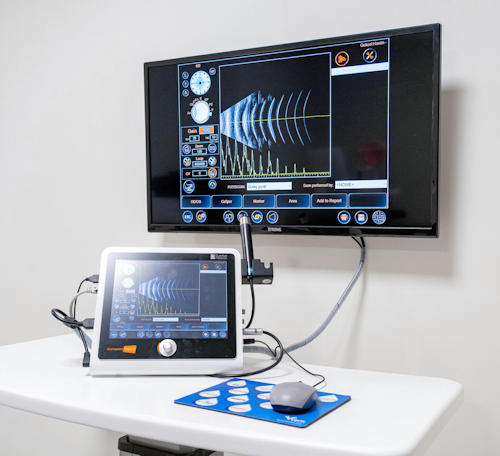
Ocular Ultrasound (USG) is a non-invasive imaging technique that allows for detailed visualization of the eye structure. This technology is used by our expert physicians at SEVGİGÖZ to assess intraocular anatomy and diagnose various eye diseases.
USG is based on the principle of sending high-frequency sound waves into the eye tissues and receiving reflections. These sound waves penetrate into the eye and are reflected from the eye tissues. The reflections are processed by a computer to create a detailed image of the inner structure of the eye.
One of the most common applications of Ocular Ultrasound (USG) is the evaluation of intraocular tumors. USG plays a critical role in determining the size, location, and characteristics of intraocular tumors. Additionally, USG is used in the diagnosis of conditions such as retinal detachment. In retinal detachment, the separation of the retinal layers can be clearly seen with USG images.
USG is based on the principle of sending high-frequency sound waves into the eye tissues and receiving reflections. These sound waves penetrate into the eye and are reflected from the eye tissues. The reflections are processed by a computer to create a detailed image of the inner structure of the eye.
One of the most common applications of Ocular Ultrasound (USG) is the evaluation of intraocular tumors. USG plays a critical role in determining the size, location, and characteristics of intraocular tumors. Additionally, USG is used in the diagnosis of conditions such as retinal detachment. In retinal detachment, the separation of the retinal layers can be clearly seen with USG images.
Ocular Ultrasound (USG) also plays an important role in evaluating diseases of the posterior segment of the eye. Particularly in cases such as optic nerve anomalies or retrobulbar masses, USG images are critically important for diagnosis.




